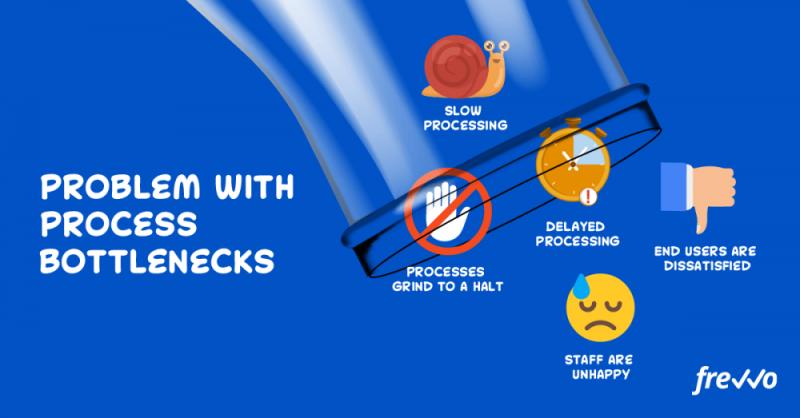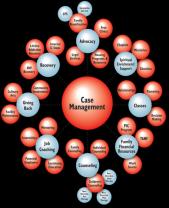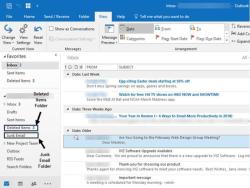What is the information bottleneck method?
The Information Bottleneck (IB) method is a machine learning and data compression technique that was introduced by Naftali Tishby and colleagues. It aims to find a balance between preserving relevant information in a dataset while discarding unnecessary or redundant information. The primary goal of the Information Bottleneck method is to identify the most informative features or representations of the data, especially in the context of unsupervised learning, where you're trying to uncover the underlying structure of the data without specific labels.
Here's how the Information Bottleneck method works:
Input Data: You start with a dataset that contains a large amount of information. This could be data points, images, documents, or any type of information.
Quantization: The IB method introduces a quantization process that seeks to reduce the amount of information in the data while retaining the most important features. This quantization can be seen as a compression step, where you are trying to find a concise representation of the data.
Relevance and Complexity: The method involves two key trade-off parameters:
- Relevance (I(X;T)): This measures how much information about the input data (X) is retained in the compressed representation (T).
- Complexity (I(T;Y)): This measures how complex the compressed representation is, and how much information it retains about a target variable (Y), which could be the labels in a supervised learning context.
Optimization: The Information Bottleneck method optimizes these parameters to find a balance. It seeks to maximize the relevance (I(X;T)) while minimizing the complexity (I(T;Y)). This results in a compressed representation (T) that contains the most informative features while discarding irrelevant information.
The Information Bottleneck method is used in various machine learning tasks, including unsupervised learning, feature selection, and data compression. It can help in understanding the intrinsic structure of data and finding relevant patterns or features, making it a valuable tool in information theory and machine learning research.
It's important to note that the Information Bottleneck method is a theoretical concept, and its practical application can be complex, especially when dealing with large and high-dimensional datasets. Researchers continue to explore its potential applications and limitations in various domains.
The information bottleneck (IB) method is a powerful technique in machine learning that aims to find a compressed representation of data that retains the most relevant information for a given task. It is based on the principle that a good representation should capture the essential information about the data while discarding irrelevant details.
Working Principle of the Information Bottleneck Method
The IB method works by optimizing a trade-off between two competing objectives: compression and relevance. Compression refers to the amount of information that is lost in the representation, while relevance refers to the amount of information that is preserved about the target variable. The IB method seeks to find a representation that minimizes compression while maximizing relevance.
To achieve this trade-off, the IB method defines two mutual information terms:
Mutual information between the input (X) and the representation (Z): This term measures the amount of information that the representation preserves about the input data.
Mutual information between the representation (Z) and the target variable (Y): This term measures the amount of information that the representation contains about the target variable.
The IB method then optimizes a Lagrangian function that balances these two mutual information terms, ensuring that the representation captures the most relevant information while minimizing compression.
Main Principles of the Information Bottleneck Method
The IB method is based on three main principles:
Dimensionality reduction: The IB method aims to reduce the dimensionality of the input data by finding a compressed representation.
Feature selection: The IB method implicitly selects the most relevant features from the input data by focusing on the information that is most predictive of the target variable.
Regularization: The IB method acts as a regularizer, preventing overfitting by penalizing representations that are too complex and capture too much information about the training data.
Advantages and Limitations of the Information Bottleneck Method
Advantages:
Captures relevant information: The IB method effectively identifies the most relevant information in the input data for a given task.
Reduces dimensionality: The IB method reduces the dimensionality of the input data, making it more manageable for machine learning algorithms.
Prevents overfitting: The IB method acts as a regularizer, preventing overfitting by penalizing complex representations.
Limitations:
Computational complexity: The IB method can be computationally expensive for large datasets, especially when using complex representations.
Sensitivity to parameter tuning: The IB method requires careful tuning of its parameters to achieve the desired trade-off between compression and relevance.
Real-world Applications of the Information Bottleneck Method
The IB method has been successfully applied in various real-world scenarios, including:
Image compression: The IB method can be used to compress images while preserving their essential features.
Natural language processing (NLP): The IB method can be used to extract meaningful features from text data for tasks like sentiment analysis and topic modeling.
Speech recognition: The IB method can be used to improve the performance of speech recognition systems by extracting relevant features from audio signals.
Bioinformatics: The IB method can be used to analyze gene expression data and identify patterns that are associated with diseases or other biological phenomena.
Notable Research Papers and Implementations
Numerous research papers have explored the IB method and its applications. Some notable examples include:
"Information Bottleneck Method" by Naftali Tishby, Fernando C. Pereira, and William Bialek (1999): This seminal paper introduced the IB method and its theoretical foundation.
"Learning Representations by Maximizing Information Bottlenecks" by David H. Flax and Christopher J. Maddison (2011): This paper explored the use of the IB method for learning representations in deep learning models.
"Deep Information Bottleneck" by Yoshua Bengio and Yann LeCun (2003): This paper extended the IB method to deep neural networks.
"The Information Bottleneck Theory of Deep Learning" by Jiaming Song, Shengwei Sun, and Jun Wang (2018): This paper provided a theoretical analysis of the IB method in the context of deep learning.
Several implementations of the IB method are available in various machine learning toolkits, such as scikit-learn and TensorFlow. These implementations provide user-friendly interfaces for applying the IB method to different types of data and tasks.













